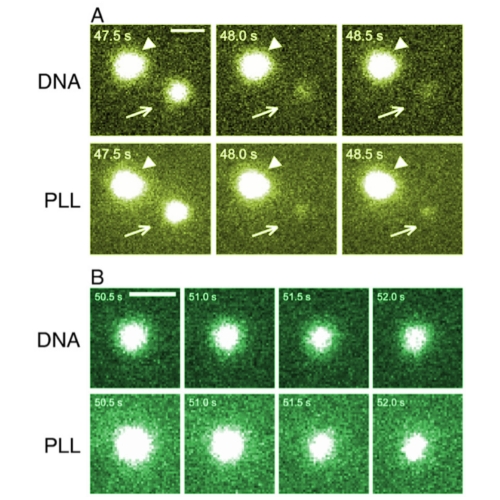Dynamics of photoinduced endosomal release of polyplexes
07-Jun-2008
Journal of Controlled Release, 2008, doi:10.1016/j.jconrel.2008.06.001, published on 07.06.2008
Journal of Controlled Release, online article
Journal of Controlled Release, online article
Endosomal escape is a well-known bottleneck for successful delivery of macromolecular drugs and genes. Photochemical disruption of endosomal membranes is an approach to overcome this bottleneck. In this study, we used the photosensitizer disulphonated meso-tetraphenylporphine with sulfonate groups on adjacent phenyl rings (TPPS2a) to investigate photoinduced endosomal release in living cells with high resolution fluorescence wide-field microscopy in real time. We studied the release dynamics of 10 kDa dextran and polyplexes consisting of DNA condensed with the cationic polymers linear polyethyleneimine (LPEI), poly-(L)-lysine (PLL) or poly-(D)-lysine (PDL). By means of dual-color microscopy and the use of double-labeled polyplexes DNA and polymer were imaged simultaneously. We show that the characteristics of the cationic polymer significantly influence the release behavior of the polyplexes. The release of dextran occurred within 100 ms. For LPEI/DNA particles, LPEI quickly spread throughout the cytosol similar to dextran, whereas DNA was released slowly (within 4 s) and remained immobile thereafter. In case of PLL particles, both DNA and polymer showed quick release. PDL particles remained condensed upon photosensitizer activation. In addition, we demonstrate that TPPS2a has biological side effects. Besides stop of microtubule dynamics in the dark, the movement of endosomes ceased after photosensitizer activation.











